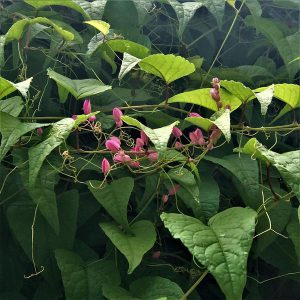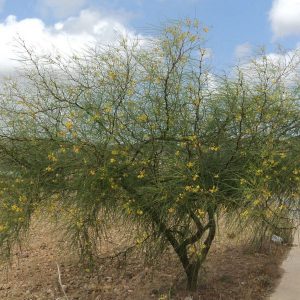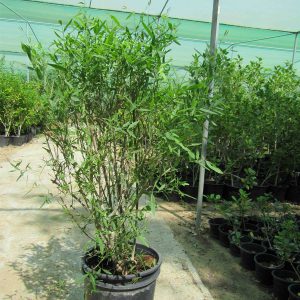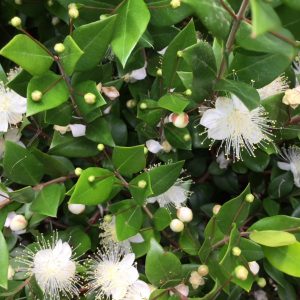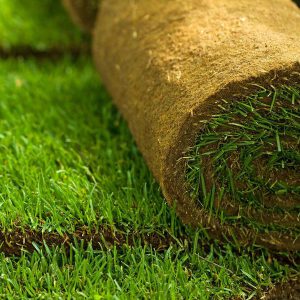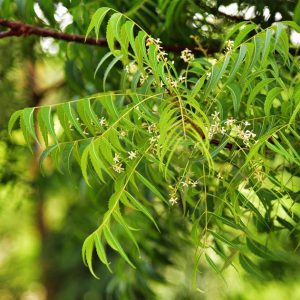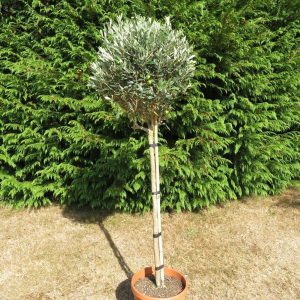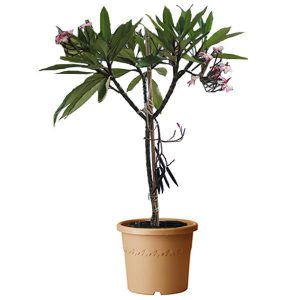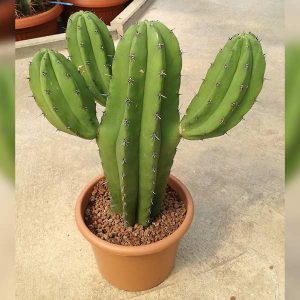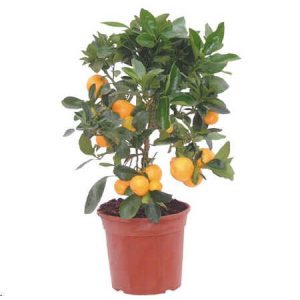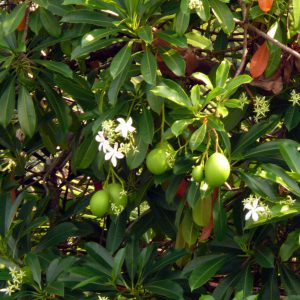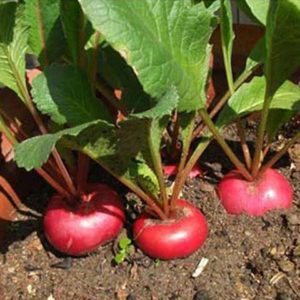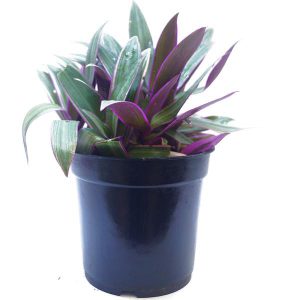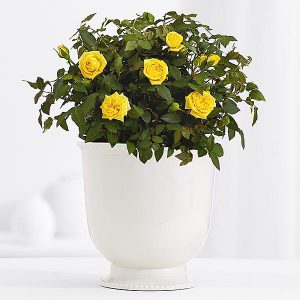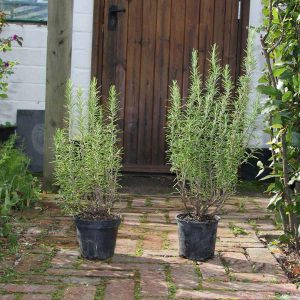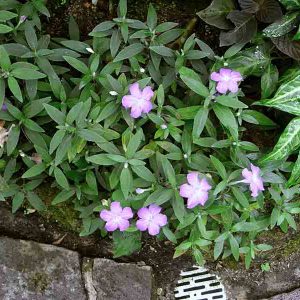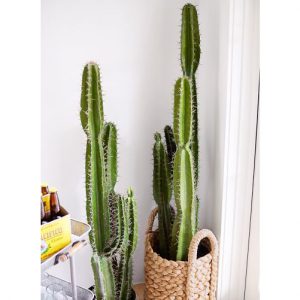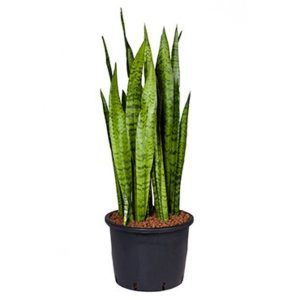Outdoor Plants
Mexican creeper (antigonon leptopus)
A. leptopus is native to Mexico. Outside its native range, this species is widely naturalized and cultivated as an ornamental in warm, tropical climates around the world, including Africa, India, Australia, North, Central and South America, West Indies, and numerous islands in the Pacific Ocean.
AED 70.00Add to cart
Mexican palo verde – parkinsonia aculeata
- This is one of the most widespread and well-known woody weeds in hot regions, and has become naturalized and shown weedy tendencies in all countries where it exists, whether native or introduced. It is disliked for its thorns, forming dense impenetra…
AED 150.00Add to cart
Miswak (salvadora persica)
Therapeutic Uses
- The root contains steam-distillable oil, which has 90% Benzyl isothiocyanate, a compound responsible for decreasing dental caries and used in the preparation of Meswak toothpaste.
- The chemical present in the plant can control gingivostomatitis, skin infection and conjunctiva.
- The root bark is tonic, stimulant, emmenagogue. The stem bark is good for gastropathy.
Source: Agro-techniques of selected medicinal plants
AED 20.00Add to cart
Moringa glory (ipomoea)
- Moringa oleifera (Moringaceae) is a tree native to India, and cultivated in tropical areas of the world.
- It is considered the “miracle tree”, because all its parts (leaves, flowers, fruits, wood and seeds) are used mainly for their pharmacological and nutritional properties.
- The crushed seeds are known for their very high capacity to purify drinking water.
- The leaves of the tree are so nutrient dense they are an integral part of the WHO and FAO programs for feeding the poor in indigent countries.
- In Ayurveda the moringa tree and its parts are used to treat over 300 ailments.
AED 10.00Add to cart
Morning oloifera (moringa)
What could be easier than walking into your yard, and gathering healthy leaves from your own grown Moringa plants to put on the table. The Moringa plant is a fast-growing, drought resistant tree that can reach up to 3 meters in its first year.
The Moringa tree is very easy to grow. Simply plant seeds or cuttings in a sunny spot. The moringa tree is a plant that grows mainly in semiarid, subtropical areas.
AED 90.00Add to cart
murraya pancucata
This lovely plant is a compact evergreen shrub with oval, shiny, deep green leaves that can get up to 2 3/4 inches long, extending from interesting, gnarled branches. At maturity, this plant will be 8 to 12 feet tall and wide, creating a large, round shrub.
Clusters of small, fragrant flowers bloom in spring, followed by bright reddish-orange berries in summer. The flowers are very fragrant and smell like orange blossoms and flowering will occur year-round. The fruit is 1/2 to 1 inch long and red. It is prized by birds.
AED 25.00Add to cart
myrtus communis
Myrtus communis is one of the most familiar and distinctive evergreen shrubs of wooded and scrub habitats in the Mediterranean region. The fragrant and aromatic, shiny green leaves, which are rich in volatile oils, contribute to the characteristic scents of these habitats. The plants produce abundant, solitary, white flowers during the long, hot Mediterranean summer. The fruits are blue-black, spherical, multi-seeded berries, which are bird dispersed; yellowish-white-fruited forms are also rarely found. Myrtus is the only European genus of the large tropical and subtropical family Myrtaceae, which includes other familiar plants such as a cloves, allspice and eucalyptus.
The range of Myrtus communis extends from Macaronesia through western Asia to Central Asia and northern India. In addition to Myrtus communis, the genus comprises at least one other species; Myrtus nivellei, is a species restricted to the mountains of the Sahara. Molecular data reveal distinct genetic differences between the eastern and western parts of the range of Myrtus communis which can be dated to events about 5-8 million years ago, followed by later colonisation of the Sahara.
AED 25.00Read more
natural grass carpet roll
Thorough watering encourages your lawn to develop deep root systems, which make the lawn hardier and more drought-resistant. Let the lawn dry out before re-watering; as a rule of thumb, the color should dull and footprints should stay compressed for more than a few seconds. When watering, put a cup in the sprinkler zone; it should get at least one inch (2.5cm) water. Most healthy lawns require only 1″ of water per week.
The best time for watering is early morning; less water will be lost to evaporation. Ideally, it’s better to water the first half-inch or so, then wait for an hour or two before watering the second half-inch.
AED 200.00Add to cart
Needle bush (acacia farnesiana)
Acacia farnesiana thrives in dry localities and it is drought hardy and fire resistant. It can be found at elevations between sea level and 1300 m. The species is reported to exhibit tolerance to drought, high pH, heat, low pH, salt, sand, and slope. It forms symbiotic relation with Rhizobium allowing it to grow in nitrogen poor soils. Thrives on poor, dry soils but favors deeper, moister, more fertile clayey soils.
Acacia farnesiana origin is in Mexico and Central America. This species was given its name since it was introduced to Europe in the 17th century to the Farnese Gardens, created in 1550 on the northern portion of Palatine Hill in Rome, Italy, by Cardinal Alessandro Farnese, and was the first private botanical gardens in Europe. Since then it spread and became naturalized in many of the world’s subtropical and tropical arid lands
AED 280.00Add to cart
Neem tree(azadirachta indica)
The neem tree (Azadirachta indica) has caught the attention of gardeners in recent years for the benefits of its oil, a safe and effective herbicide. However, that’s just the beginning of the story. This versatile plant, native to tropical India and Asia, is a valuable tree with many uses. Read on for neem tree information, including neem tree benefits and uses
AED 215.00Add to cart
Olive tree (olea europea)
The olive tree is an ancient cultural and characteristic plant of the Mediterranean, which comes from a Mediterranean wild family, the Olea europaea var sylvestris. The farming of the tree goes back many millennia and probably took place in the Eastern Mediterranean. There are about 300 different olive varieties grown worldwide for the production of table olives and olive oil. These products represent a very important branch of industry in the Mediterranean countries, particularly Spain, Italy and Greece.
AED 300.00Add to cart
outlander (nerium oleander)
Nerium oleander, commonly known as oleander, is a highly toxic plant that has been cultivated since ancient times.
Nerium oleander is a highly toxic ornamental shrub widely cultivated in the Mediterranean. It has been grown since ancient times and features in many of the Roman wall paintings in Pompeii.
Alexander the Great in his military campaigns is said to have lost men as a result of eating meat skewered on highly poisonous Nerium twigs.
AED 30.00Add to cart
Pansy
Pansies are the colorful flowers with “faces.” A cool-weather favorite, pansies are great for both spring and fall gardens! Here’s how to keep your pansies growing and blooming.
Pansies have heart-shaped, overlapping petals and one of the widest ranges of bright, pretty colors and patterns.
Good for containers, borders, and as ground cover they are a go-to flower for reliable color in almost three seasons (except hot summers).
AED 40.00Read more
Papya mam (carica papaya)
- Try your hand at papaya growing with this lovely looking, palm like sub tropical plant..
- Whilst not hardy outside the papaya (Carica papaya) makes a superb sunny conservatory specimen.
- The deeply lobed glossy green leaves alond stand comparison with even the best indoor plants.
- As the plant matures it bears lovely white blossom followed by the familiar elogated fleshy fruits
- Supplied as an established plant 70-80cm tall in 5L pot. For best results keep moist always and feed reularly.
AED 70.00Add to cart
Pennisetium
Pennisetum alopecuroides is a highly decorative ornamental grass, also known as Fountain Grass, and is a plant which gives almost all year round interest in the garden. It is a low-maintenance plant, which quickly forms a clump, so is ideal for filling gaps in perennial and shrub borders. The grassy foliage is neat, but stays quite inconspicuous until the flower heads appear during late summer. But, once they appear, they really dazzle, with spikelet’s looking much like a squirrel’s tail! Leave the decorative seedheads on your Fountain Grass plants into the autumn. Height: 150cm (59″). Spread: 120cm (47″).
AED 45.00Add to cart
Peregrina jatropha
The drought, which started in April and ran through June, created a heavy flowering of oleander, hibiscus, lantana, pentas and other species.
It was, however, interesting to note that many of them were late in leafing up and flowering.
From a design principle, too heavy a massing of one species can create a real statement when in full bloom, but once the flowering is over little of interest is observed. This is especially the case with pentas and lantana which, in my opinion, are the dominant colour palettes for ground cover plants from spring to autumn.
As soon as flowering has ended, pruning should be immediately carried out to encourage new growth and, of course, another burst of flower. A good fertilising with a coated fertiliser which can be supplemented with a liquid feed should be applied. Do not apply granular fertiliser when soil is dry or temperature over 75 degrees.
AED 20.00Add to cart
Petunia
Growing petunias can offer long term color in the summer landscape and brighten dreary borders with lovely pastel colors. Proper petunia care is simple and easy. After learning how to plant petunias you can include them in your flower bed and container garden. Four species of petunias include hundreds of cultivars and offer a perfect addition to the home landscape:
AED 2.00Add to cart
Pine apple (ananas comosis)
The tasty fruit and juice is popular with humans around the world, but residues from the juice are also used to make livestock feed because of their high vitamin A content.
AED 110.00Add to cart
plectranthus scutellariodes
But what is coleus? Sometimes called painted nettle, they are multi-hued, stunning plants grown for their leaves rather than flowers. Excellent for either container gardening or for adoring garden beds, they offer amazing color in partial shaded areas.
Other related species of coleus are used abroad as culinary herbs, medicines, or even for their edible tubers. I’ll briefly touch on a few of those too because they’re interesting, but there’s plenty to see just with Plectranthus scutellarioides.
Hundreds of ornamental coleus cultivars are available, and no two are identical, so let’s get started!
Plumbago (plumbago auirculata)
The plumbago plant (Plumbago auriculata), also known as the Cape plumbago or sky flower, is actually a shrub and in its natural surroundings can grow 6 to 10 feet tall with a spread of 8 to 10 feet. It is native to South Africa, and knowing this provides the first clue to how to grow a plumbago, along with where to grow one. Plumbago thrives in the South African heat and in the United States it is found growing year-round in the southernmost parts of Texas and Florida.
AED 50.00Add to cart
Plumeria
Plumeria flowers are most fragrant at night in order to lure sphinx moths to pollinate them. The flowers yield no nectar, however, and simply trick their pollinators. The moths inadvertently pollinate them by transferring pollen from flower to flower in their fruitless search for nectar. Insects or human pollination can help create new varieties of plumeria. Plumeria trees from cross pollinated seeds may show characteristics of the mother tree or their flowers might just have a totally new look.
Plumeria species may be propagated easily by cutting leafless stem tips in spring. Cuttings are allowed to dry at the base before planting in well-drained soil. Cuttings are particularly susceptible to rot in moist soil. One optional method to root cuttings is applying rooting hormone to the clean fresh-cut end to enable callusing. Plumeria cuttings could also be propagated by grafting a cutting to an already rooted system.
AED 210.00Add to cart
Polaskia Chichipe Cactus
This is a cactus which came with me from London to Spain and it flourished! In the photo taken in 2009 the difference between the old and the new self is very visible. The colour changed and also the width increased.
With less than ideal conditions from 2011 (moved from Spain to Northen Italy) the tip became thinner.
AED 90.00Read more
Pomelo (citurs maxima)
Like other citrus fruits, pomelos are high in vitamin C. They are generally eaten as a fresh fruit, and they store well. They have long been popular in Asia, especially China, Indonesia, and Thailand, but are increasingly found in specialty markets in the U.S. as well. The juice is also used in various beverages (both alcoholic and non), and the peel may be candied. Traditional medicinal uses of the fruit include treatment of coughs, fevers, and gastrointestinal disorders. The aromatic flowers are picked and processed into perfume in Vietnam, and the wood, which is heavy and hard-grained, used for making tool handles.
AED 250.00Read more
Pong pong tree (cerbera odollam)
This tree with pretty white star-shaped flowers and large round fruits is widely planted along our roadsides and in our parks. It is also sometimes seen growing wild in our mangroves, seashores and tidal rivers. According to Giesen, it is found in coastal forest and landward margins of mangroves and along rivers. It has a limited salt tolerance, and occurs on clays or sandy soils.
Ponytail palm (nolina palm)
- Use a fast draining soil, such as a cacti and succulent potting mix. If you have potting soil, sand, and perlite already on hand, you can create your own desert soil mixture: Simply mix 1 part potting soil, 1 part perlite, and 1 part sand.
- Select a pot that has a hole in the bottom, so that excess water can be drained off. Ponytail palms do not like to sit in moist soil for very long.
- Use a clay pot if possible; the porous material will absorb some of the water, drying out the soil more quickly (a good thing for cacti and succulents).
- Ponytail palms prefer to have as much light as possible, so place the plant in a bright location.
AED 335.00Add to cart
Psidium guajava (guava tropial)
The common guava is easy to grow and tolerates adverse conditions. The tree is attractive and the patchy bark lends visual interest. It bears prolific quantities of fruit. The aromatic fruit is well regarded thhroughout the American tropics and beyond. Unfortunately, the guava is a primary host of the Caribbean fruit fly. In addition, it is classified as an invasive exotic. When making planting decisions, the gardener should weigh these two drawbacks against the guava’s many attibutes.
AED 60.00Add to cart
Punica granatum (pomegranate)
Pomegranate is a berry, with fruits being 5–15 cm (2-6 inches) in diameter, rounded in shape, with thick, red-brownish skin. The number of seeds can vary from 200 to about 1400 seeds. It is native to southeastern Europe and Asia and has been cultivated in ancient Egypt, Persia, India, Babylonia, Iran etc.
Plant is very ornamental, especially when flowering and some people grow them for their flowers and fruits are just a ‘byproduct’, loaded with vitamin C and other vitamins, minerals and antioxidants. Also, some varieties are grown only for their flowers.
AED 105.00Add to cart
Radish red
Radishes mature incredibly quickly (with some varieties taking only 3 weeks from seed to maturity), and they are very hardy. Their peppery flavor adds a kick to soups and salads, and they take up very little space in the garden. To begin successfully growing radishes, you’ll find the following instructions most helpful.
AED 200.00Read more
Radish white
Chinese white radish is a cruciferous vegetable that does well in conjunction with carrots, parsley or parsnips. The radish seeds are sown directly into the ground. Plant seeds 1/2 inch deep, one inch apart in rows spaced 12 inches apart. After sprouting, thin shoots to two inches apart. Watering frequently is imperative to maintain moist soil. Add nitrogen-rich fertilizer or manure to the soil to improve the root growth and leaf structure.
AED 50.00Read more
Rangoon creeper (quisqaalis indica)
Amongst the lush foliage of the world’s tropical forests one will find a predominance of lianas or vine species. One of these creepers is the Quisqualis rangoon creeper plant. Also known as Akar Dani, Drunken Sailor, Irangan Malli, and Udani, this 12-foot long vine is an aggressively fast grower which spreads rapidly with its root suckers.
The Latin name for rangoon creeper plant is Quisqualis indica. The genus name ‘Quisqualis’ means “what is this” and for good reason. Rangoon creeper plant has a form more closely resembling that of a shrub as a young plant, which gradually matures into a vine. This dichotomy flummoxed early taxonomists who eventually gave it this questionable nomenclature.
AED 70.00Add to cart
Reindeer moss
Provide your reindeer moss with good quality air. Reindeer moss does not grow roots, and draws minimal nourishment from host plants like trees. It depends on the air for almost all of its nutrients, and will not sustain itself in highly polluted areas.
AED 200.00Add to cart
Rhoeo dis colour
Rhoeo, including Rhoeo discolor and Rhoeo spathacea, is a plant of many names. Depending on where you live, you may call this plant moses-in-the-cradle, moses-in-a-basket, boat lily and oyster plant. Whatever you call it, Rhoeo makes an excellent and fast growing ground cover in the garden.
AED 5.00Add to cart
Rosa plant
Caring for rose bushes is important to their overall health and vigor, especially when it comes to watering. Roses require at least an inch of water weekly throughout their growing season, beginning in spring or following spring planting. While overhead watering is suitable before the onset of new growth, it is often better to water these plants at the soil line using soaker hoses or similar means. Rose bushes are very susceptible to fungal diseases, such as black spot and powdery mildew, especially when their foliage is kept too wet.
AED 45.00Add to cart
Rosemary
Growing rosemary indoors is sometimes a tricky thing to do. Many good gardeners have tried, and despite their best efforts, end up with a dry, brown, dead rosemary plant. If you know the secrets to proper care of rosemary plants growing inside, you can keep your rosemary plants growing happily indoors all winter long.
AED 20.00Add to cart
Royal poinciana -delonix regia
Given proper care, royal poinciana (Delonix regia), also known as flamboyant tree, peacock flower and flame tree, celebrates late spring with color. Flame-red clusters of 5-inch blooms drench the gray-barked branches before their foliage unfurls. Fernlike leaves soon follow, and the show continues through midsummer. Long, ornamental seedpods replace blooms by season’s end. The tree reaches 30 to 40 feet tall and spreads 50 or more feet, with its branches forming an umbrella of filtered shade. Hardy in U.S. Department of Agriculture plant hardiness zones 10 through 12, royal poinciana has no serious disease, insect or other problems when its basic care needs are met.
AED 250.00Add to cart
Ruellia ciliosa
Easy to care for and great for use as coverage, ruellia plants offer unique beauty to landscape areas. So, what is ruellia and can this Mexican native be cultivated in our own home garden landscape? Keep reading to learn more about growing ruellia.
Ruellia flowers are 2-inch long funnel-shaped blooms growing on a perennial shrub. Originally native to Mexico, it is now found in the Southwest United States, naturalized in many areas. Ruellia flowers from mid spring through the first frosts of fall with purple or blue blooms (on occasion red or pink) on purple stems.
AED 5.00Add to cart
Russellia equisetiforms (fire caricker plant)
Light: Bright light to full sun. Firecracker plants require lots of light to bloom. Move it outdoors for the summer and set it in the sunniest spot you can provide.
Water: Water thoroughly, allowing the top of the soil to dry out between waterings. Mature plants are drought-tolerant, so it’s a good idea to keep them on the dry side.
verage room temperatures 65-75°F/18-24°C. If you move your plant outside for the warm months, don’t worry — it can take the heat. It’s hardy in USDA Zones 9b-11. It won’t tolerate freezing temperatures.
AED 20.00Add to cart
Saguaro cactus
Water the saguaro every 10 to 14 days. The soil should dry out completely before you need to water again. Check the soil to 4 inches deep with your fingers. If you feel even a slight bit of moisture, wait a few days to water. Even though the Saguaro is indoors, you should still follow a seasonal watering schedule. When the nighttime temperatures dip below 60 degrees F, discontinue watering altogether until the nighttime temperatures stay above 60 degrees F.
AED 50.00Read more
Sanseviera Zeylanica
Sansevierias are some of the toughest plants you can find. Whether indoors, in your garden or on your balcony, these spiky beauties can put up with almost anything. They’re easy as can be, but there are a few things you should know. This post is all about Sansevieria, aka Snake Plant, care. You’ll see how low maintenance they really are!
AED 115.00Add to cart

